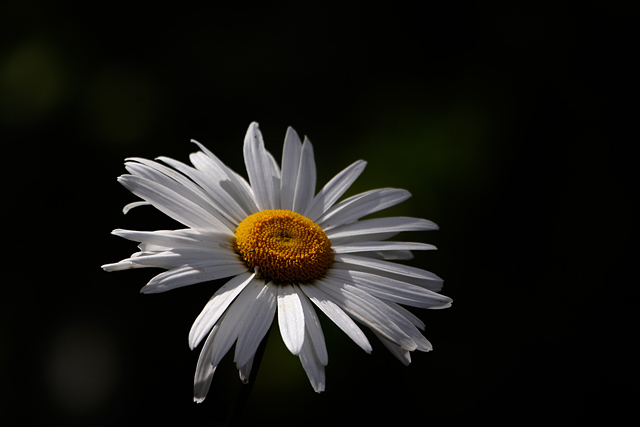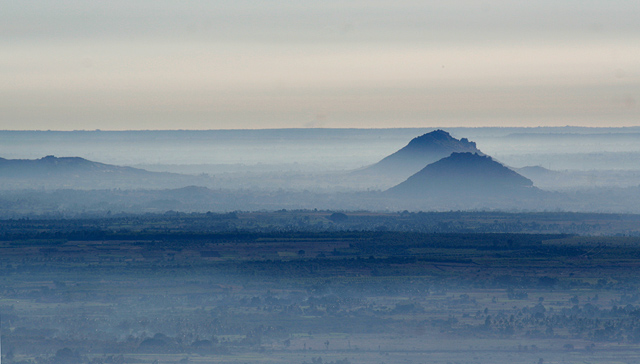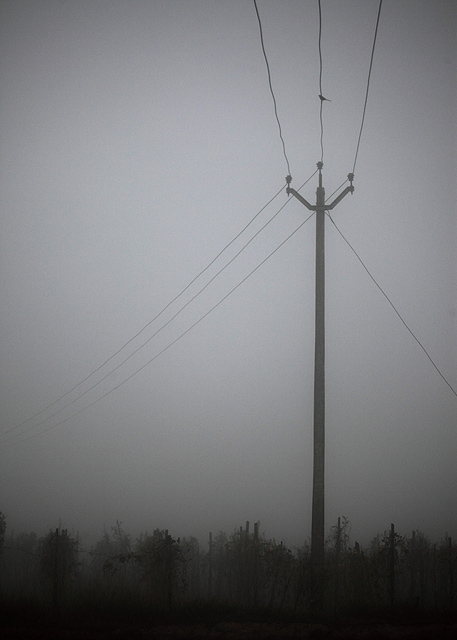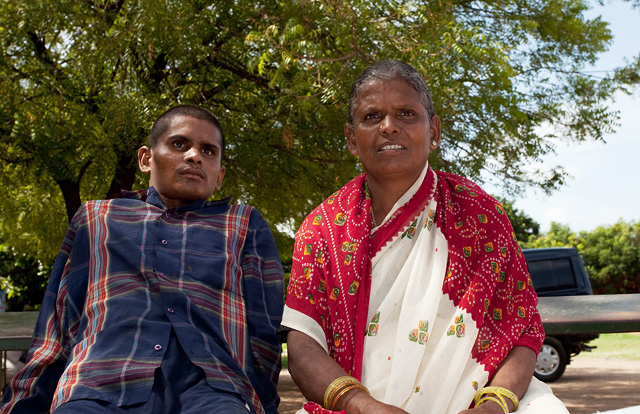This article appeared in August issue of Terrascape, a travel magazine for which I am an editorial consultant and also write a column on photography. Read all the earlier earlier travel photography articles on India Travel Blog.
Anyone who is serious about making good images would spend a lot of time working on the composition thinking about various angles, elevations, what to include and what not to include in the frame and many other aspects that define a photograph. While a lot of thinking and observation do work in favour of making good and distinct composition, sometimes very simple frames can create plenty of drama in the picture. Here is a look at the power of simplicity in making eye-catching images.

Just one subject. A frame that has just one attractive subject and not a thing else—no clutter in the background and nothing else in the foreground—can help highlight the subject dramatically. Some examples: a beautiful white flower with completely dark background, portrait of a person, bird or animal with uniform background that contrasts the colour of the subject, etc. Do keep in mind that it is important in such cases that the subject be charming in itself. A colourful bird or a beautiful flower has the power of attracting the viewer with ease.

Small aberrations. A uniform frame with one small distraction will immediately catch the eye of the viewer. It could be the image of a small hillock in an otherwise plain territory, a small colourful boat in the calm blue lake or a person wearing colourful clothes in a lush green field. In all these cases, the background colour and texture help highlight the subject very well and immediately attract the attention of the viewer to the subject, even if it occupies a small portion of the frame.

Go Black and White. In some occasions, converting to black and white can help in making simplistic images. Use this technique when the colour of the subject itself is not important, but the surroundings have bright colours that may unnecessarily distract he viewer away from the subject.
Minimalism. Minimalism can perhaps be defined as simplicity taken to the extreme. A picture that may comprise of just a few lines that catch the viewers interest, shapes that have very little complexity in them but present a uniformity that is attractive (such as the towers of a temple, ridges of a mountain), a small portion in an image that offers very high contrast from rest of the frame are some examples of minimalism.
 Come August, we will be heading to photograph the sandstone cliffs, village life, well-known rock cut temples and small temples in leafy places in and around the beautiful small town of Badami. Join us on the photography tour to Badami. Also visit Darter facebook page to stay updated on our tour schedules and new announcements.
Come August, we will be heading to photograph the sandstone cliffs, village life, well-known rock cut temples and small temples in leafy places in and around the beautiful small town of Badami. Join us on the photography tour to Badami. Also visit Darter facebook page to stay updated on our tour schedules and new announcements.
Introduction
Badami is known for its rock cut temples and a history dating back more than thousand years. Travel photographers see much more than just that; this small town offers a wide variety of photography opportunities. There are red sandstones glistening in the morning sun, waterfalls that come alive and tumble down the cliffs adjacent to the caves in the monsoon months, colonies of friendly people with photogenic face who are more than happy to be subjects for your camera, a rural life where you see women washing clothes in a lake next to men scrubbing a bullock’s hide, temples in leafy environs with roots of ficus trees drooping over the gopuras, brilliant landscapes of cliffs overlooking a lake,.. The list is very long.
Darter Photography takes you to this Badami and nearby places that are a mix of well-known and unknown, bringing you great photography opportunities that can keep your clicking finger busy.
Our photography experts with in-depth experience of photographing Badami’s surroundings will work with you through some class-room sessions and all through the outdoor shoots to ensure that you get the best images.
Go to photography tour of Badami to see more details and to register.
This article appeared in June issue of Terrascape, a travel magazine for which I am an editorial consultant and also write a column on photography. Read all the earlier earlier travel photography articles on India Travel Blog.
The tiny light emitting device located on the top of most cameras can be of great use in occasions when natural light is not favourable to us. Most of us generously use the flash after dark, be it indoors or outdoors. But a camera flash can make or break your photographs depending on the way it used. Here are some insights on making the best use of camera flash.
Where to use flash. The use of flash need not be limited only to situations of darkness or places where there is not sufficient light for the camera. It can be productive to use flashes even in mid-day. When you have strong and direct light, the subject can cast dark shadows in places that may appear completely dark in the photograph. Such shadows may often look ugly, especially when shooting people in strong mid-day sun when the eyes tend to be in a shadow. This can be countered by firing your flash, which can slightly brighten the areas in shadow and allow details in those parts to come out better in the picture. When the camera flash is used in this way to fill up the shadows, it is usually called ‘fill light.’
The problems with on-camera flash. When you use the flash to photograph people in low-light, it becomes the cause of the same problem as in the case of direct light mentioned in previous paragraph. The flash becomes a strong and direct light source and casts harsh shadows. When you photograph a person’s face, you may see a ring of darkness around the face in the area where the flashlight gets blocked by the person’s face. A flash can also spoil the mood and ambience of the place where it is predominantly lit by warm, tungsten lighting. The flash light is white in colour and corrupts the warm lighting in the room. If your camera permits, try to shoot with a higher ISO in the range of ISO 400 to ISO 1200 instead of using flash. This helps preserve the mood created by ambient light and prevents formation of dark shadows.

This photograph was taken on a sunny day, with these people sitting under the shade of the tree. There was some strong sunlight filtering from through the tree and their faces were lit nonuniformly. Without a flash, the areas under shadow would have appeared very dark. However, an external flash used as fill light helped light up all the areas uniformly.
Effective use of flash. An external flash can make a sea-difference to your pictures when compared to on-camera flash. The flexible design of external flashes allows you to change the direction of flash light, and where the environment permits, let’s you bounce the light from a roof or wall instead of emitting strong and direct light on the subject. An even better way to use a flash is by firing it off the camera using a remote trigger or a chord that connects the camera with your external flash. This gives you greater control on the direction of incident light.



 Come August, we will be heading to photograph the sandstone cliffs, village life, well-known rock cut temples and small temples in leafy places in and around the beautiful small town of Badami. Join us on the photography tour to Badami. Also visit Darter
Come August, we will be heading to photograph the sandstone cliffs, village life, well-known rock cut temples and small temples in leafy places in and around the beautiful small town of Badami. Join us on the photography tour to Badami. Also visit Darter 